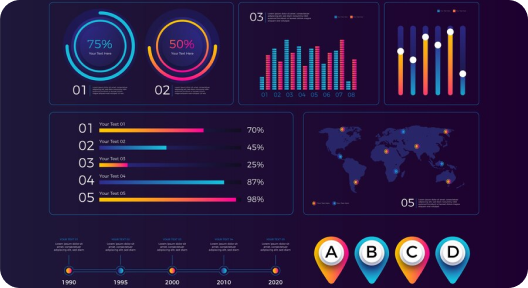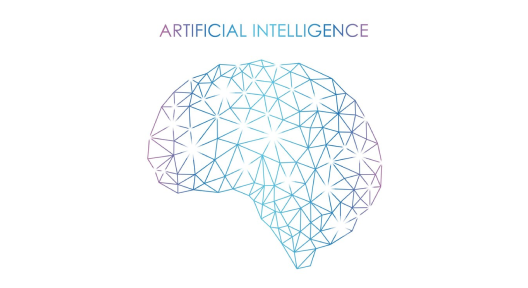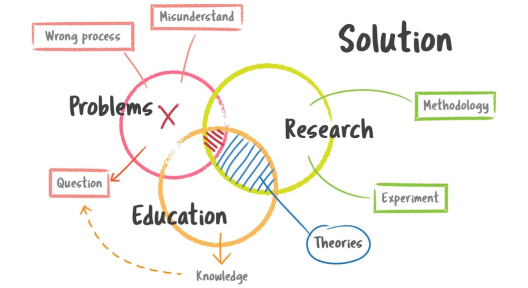The Financial Fraud Detection Model is an essential solution for financial institutions to mitigate risks associated with fraud, protect assets, and comply with regulatory standards. With the increasing sophistication of fraud attempts, financial institutions need a robust, scalable, and adaptive solution that leverages advanced technologies like machine learning, artificial intelligence (AI), and big data analytics. This model provides a proactive approach to fraud detection, allowing real-time transaction monitoring, predictive insights, and a significant reduction in fraud-related losses.
Fraud Detection

Business Benefits
Reduced Fraud Loses
- Early detection and prevention of fraudulent transactions significantly reduce financial losses. The model flags suspicious transactions before they escalate, minimizing the impact of fraud.
- Mitigating fraud-related losses contributes directly to the institution’s bottom line and ensures the protection of customer assets.
Cost Efficiency
- Automates the detection and analysis of fraudulent activities, reducing the need for manual oversight and intervention.
- Reduces costs related to legal actions, customer compensation, and regulatory fines.
- Increased operational efficiency allows institutions to reallocate resources to higher-value tasks.
Improved Customer Trust
- A proactive fraud prevention system increases consumer confidence in the institution’s ability to safeguard their financial data.
- Building trust with customers results in higher retention rates, stronger brand loyalty, and positive word-of-mouth referrals.
Regulatory Compliance and Risk Mitigation
- Compliance with stringent regulations reduces the risk of legal and regulatory penalties.
- The model provides real-time monitoring and reporting, ensuring that the institution remains compliant with industry standards and avoids costly fines or reputational damage.
Enhanced Decision Making
- By analyzing data from multiple sources, the model provides comprehensive insights into transaction trends, customer behaviour, and risk levels.
- This data empowers financial institutions to make informed decisions on fraud prevention strategies, policy adjustments, and future investments in security.
Competitive Advantage
- Offering an advanced fraud protection solution distinguishes the institution from competitors, positioning it as a leader in secure financial services.
- Customers are more likely to choose institutions that provide cutting-edge fraud detection capabilities, knowing their data is secure.
Core Components
- Data Ingestion & Processing
- Anomaly Detection & Machine Learning Algorithms
- Risk Scoring & Predictive Analytics
- Real-Time Alerts & Response
- Reporting & Compliance
- Continuous Learning and Adaptation

The model ingests large volumes of transaction data from multiple sources such as payment gateways, banking systems, credit card processing systems, and customer accounts.
Real-time streaming capabilities ensure continuous monitoring of transactions to detect fraudulent activities immediately.e key details, including name, contact information, purpose of visit, department, host name, and check-in/out times
Real-time streaming capabilities ensure continuous monitoring of transactions to detect fraudulent activities immediately.e key details, including name, contact information, purpose of visit, department, host name, and check-in/out times

The model utilizes sophisticated machine learning algorithms to detect anomalies in transaction patterns. It identifies unusual behaviors or patterns that may indicate fraud, such as:
- Uncharacteristic transaction volumes or amounts.
- Transactions from unfamiliar geographic locations.
- Multiple failed authentication attempts.
- Rapid or suspicious account activity.
Supervised Learning: Initially trained on historically labelled data (fraud vs. non-fraud), the model refines its detection capabilities over time with new transaction data.
Supervised Learning: Initially trained on historically labelled data (fraud vs. non-fraud), the model refines its detection capabilities over time with new transaction data.

Each transaction is assigned a fraud risk score based on its likelihood of being fraudulent. The system ranks transactions from low to high risk, enabling human investigators or automated systems to prioritize the most suspicious activities.
Predictive analytics also offer future insights based on historical data, helping institutions prepare for emerging fraud trends or vulnerabilities.
Predictive analytics also offer future insights based on historical data, helping institutions prepare for emerging fraud trends or vulnerabilities.

Each transaction is assigned a fraud risk score based on its likelihood of being fraudulent. The system ranks transactions from low to high risk, enabling human investigators or automated systems to prioritize the most suspicious activities.
Predictive analytics also offer future insights based on historical data, helping institutions prepare for emerging fraud trends or vulnerabilities.
Predictive analytics also offer future insights based on historical data, helping institutions prepare for emerging fraud trends or vulnerabilities.

The model includes reporting features that generate compliance reports for regulatory bodies like PCI DSS, GDPR, and AML (Anti-Money Laundering), ensuring that financial institutions remain compliant with industry standards.
The solution provides audit trails, allowing institutions to track fraud investigations, responses, and outcomes.
Customizable dashboards offer insights into fraud trends, detection performance, and the effectiveness of anti-fraud strategies.
The solution provides audit trails, allowing institutions to track fraud investigations, responses, and outcomes.
Customizable dashboards offer insights into fraud trends, detection performance, and the effectiveness of anti-fraud strategies.

The model’s AI algorithms continuously learn from new transaction data, adapting to emerging fraud techniques and evolving patterns of malicious activity. This helps the solution stay relevant and effective even as fraud methods become more sophisticated.
Regular updates and model retraining ensure that the fraud detection system remains accurate, reducing false positives and improving detection rates.
Regular updates and model retraining ensure that the fraud detection system remains accurate, reducing false positives and improving detection rates.
Key Features & Capabilities
Real-Time Detection and Prevention
- Continuously analyzes transactions to detect fraud in real-time, reducing financial losses and operational impact.
- Alerts stakeholders instantly, enabling swift intervention.
Advanced Analytics with AI/ML
- Utilizes machine learning algorithms to improve accuracy over time, adapting to new and emerging fraud techniques.
- Predictive analytics helps identify vulnerabilities in the system before fraud occurs.
Data-Driven Decision Making
- In-depth analysis of historical and real-time data to identify trends, anomalies, and high-risk behaviors.
- Provides actionable insights for refining fraud prevention strategies and improving overall system security.
Scalability and Flexibility
- Can scale to handle the increased transaction volume of growing financial institutions.
- Flexible deployment options, including on-premises, cloud-based, or hybrid solutions.
Regulatory Compliance
- Helps institutions comply with industry regulations such as PCI DSS, GDPR, and AML requirements, ensuring robust data protection and fraud detection processes.
- Provides audit trails and reports necessary for regulatory reporting.